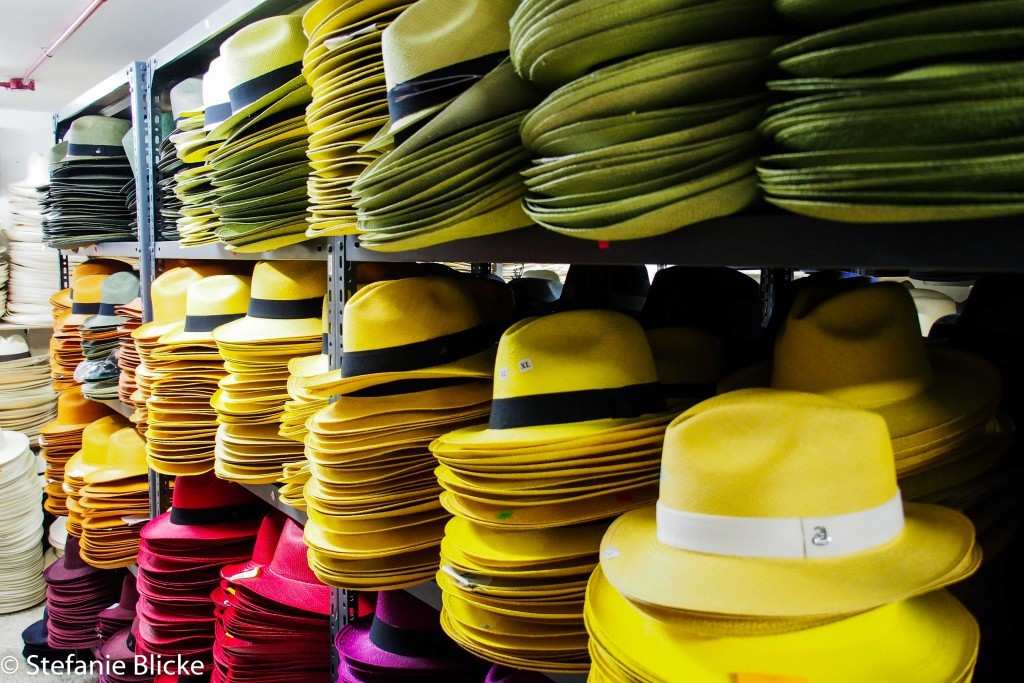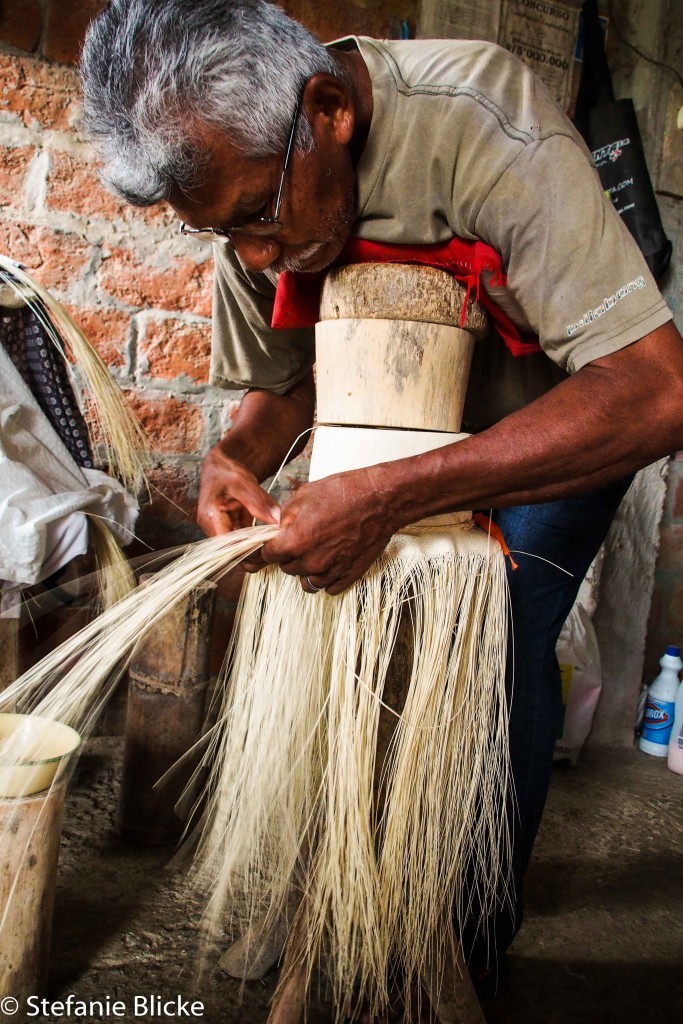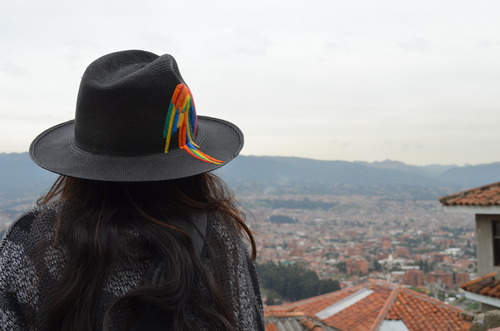Well, yes, I admit in public: I’m not neutral (I never claimed I was 😉 It is not only my new travelmate – a wonderful Panama Hat – but also the marvellous moments in Guayaquil and Manabí, the sympathetic company of Andrea and Ecua Andino Hats and our journey along the entire production chain of Panama Hats that make me say: Wow, I’m impressed! This was one of the most beautiful moments of my journey through Latin America. Honestly, who wouldn´t be happy in the company of (hat-)soulmates?
Anyway Imagine the most original thing from your country is said to be from another country, although it’s totally clear that you “own” this thing, idea, story… Imagine the Baseball Cap was called Nicaragua Cap, imagine Scotch was called French.
Repeatedly, every Ecuadorian you talk to will tell you: The Panama Hat is NOT from Panama. It is from Ecuador. The finest Jipijapas (that’s the original name of these straw hats) are produced here, along the coastline of Ecuador’s Provence Manabí. In Panama, there were just the right people with a lot of money in the right moment of time, who made hat dealers export their products to the canal. This art of hat-making, however, you find only in Ecuador. Nobody seems to notice. And here we find ourselves just in the middle of Ecuador’s soul: A small, not really important but tremendously beautiful country that fights to be noticed as something more than just Galapagos and bananas. Hat-makers in Ecuador live in small houses in small villages. They don’t earn much. Again and again they explain visitors how Panama Hats are made, in order for their craft to be the choice and not the cheap machine-made plastic hats.
The sparkling colourful showroom might not transport the long long story of the hat-making craft in Ecuador. Yet, every single Panama Hat is 100% handmade. Even the straw is carried by donkeys if the weather doesn’t allow for heavy machines to be used, if the pick-ups get stuck in the mud, for example.
It has been raining heavily for a week. That doesn’t really disturb me in the breath-taking humid heat of Guayaquil. But it disturbs the production. The volume of water which has rained down on Manabí and trickled down through roofs and into the earth, has stopped the straw drying and bleaching processes. Some orders won’t be sent in time.
A little of the ever more difficult climate conditions – talking about El Nino, for example, – I see when I stand next to the Ecua Andino Hats team. In their sandwich position between clients – hat dealers all over the world – and hat weavers working in cooperatives they constantly have to mediate.
They sometimes can’t deliver in time, because the hats have just not arrived. Clients need to be contacted, hat makers as well. What is the problem? When will they deliver? Are there any alternatives? But what can be done when there is draught or when it rains twine so that the straw does not dry but rot?
Andrea Lecaro from Ecua Andino Hat, Fashionblogger Aleech and I want to know more. We start our trip to the production places early in a rainy morning. When we arrive at the cooperative Santa Elena things look bad. We walk into a huge drying hall which is full of straw. But the rain has already destroyed most of the straw when it was drying outside. The black tips indicate that it’s rotting. The women and men from the cooperative lost weeks of hard work. In addition to this tragedy, they cannot continue their work now, because the rain has flooded the dirt roads. They can hardly move from one house to the next. The ladies argue strongly that they urgently need rubber boots. So, Andrea takes their shoe sizes: Teresa: 34, Margarita 35, Maxsimiliano 40…
Afterwards they show me how the material for the hat-weaving is made: The men and women from the cooperative cut the leaves into strips and take out the outer green parts (these are used for the roofs). The yellowish white strips they boil in huge pots for a few hours. Afterwards they dry them just the way you would dry your clothes on never ending lines.
Only when the material is really dry it can be coloured. Therefoer other big pots are used. To bleach it, Teresa and her colleagues put the straw in a separate “room” together with sulfur. “Bleaching is very unhealthy,” Teresa explains. That’s why we have these rooms, now.
Depending on the quality of the ordered hats the weavers, who buy the straw from the cooperative, continue to cut it into even finer strips. Only when everything is perfectly well prepared they start weaving.
Don’t ask me, how exactly the weaving is being done. I’ve watched them for hours and hours and still I’m not able to tell. There are different patterns and as I said before there are different qualities. The finest hats have hundreds of little knots per square inch. Just try. Sit down with a handful of straw and make 400 knots per square inch. If you manage to do so I’ll give you Mr Espinar’s contact. He will definitely be interested in finally talking to someone who is able to hold a candle to him. Mr Espinar lives in Pile, close to Montecristi. His father Senóvio is 73 years old, still doing hats for 8 hours a day. The rest of the day Senóvio works in the fields. !!!
Author of the article: Stefanie Bickle









